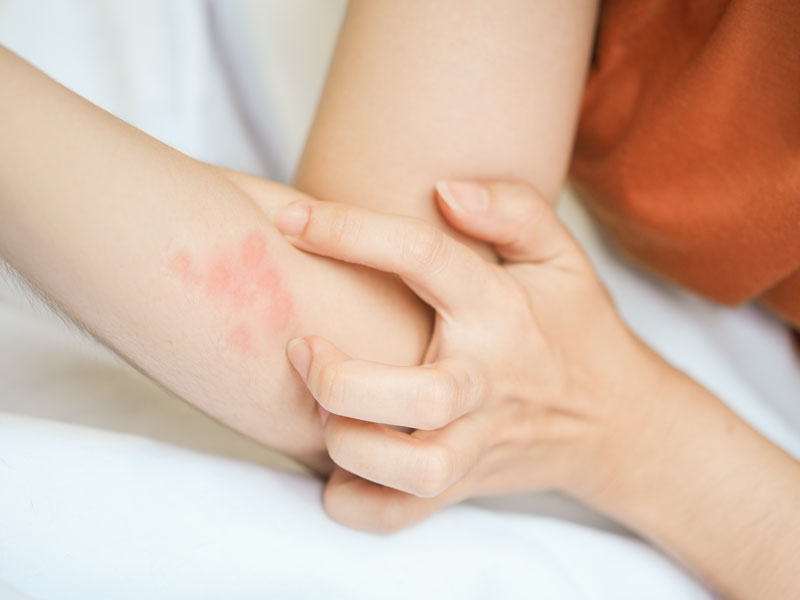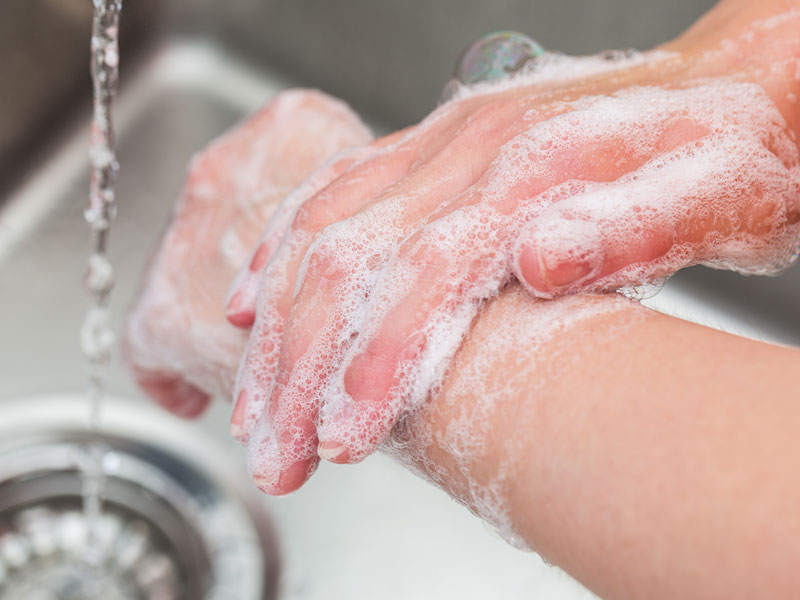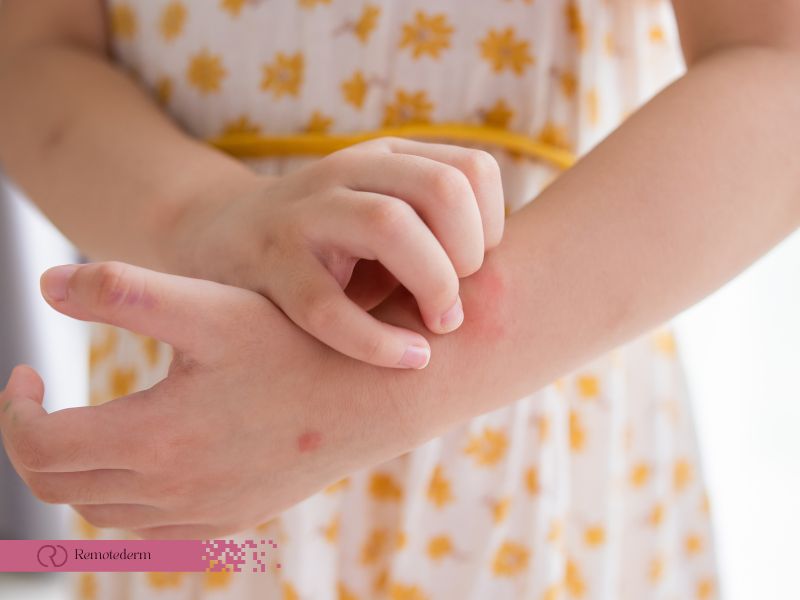Contact dermatitis, a common skin condition affecting millions worldwide, can be a source of frustration and discomfort. If you’re seeking effective ways to get rid of contact dermatitis quickly, you’ve come to the right place. In this comprehensive guide, we will provide you with expert tips and remedies to alleviate symptoms and promote healing. Whether you’re looking for prevention strategies, self-care measures, or medical treatments, we have you covered. Read on to gain a deeper understanding of contact dermatitis and discover valuable insights to manage this condition effectively.
what is Contact Dermatitis
Before we delve into the remedies, let’s first understand what contact dermatitis is. Contact dermatitis is a type of skin inflammation that occurs when the skin comes into direct contact with irritants or allergens. In other words, contact dermatitis is a kind of eczema caused by coming into contact with a specific chemical.
There are two main types of contact dermatitis: allergic contact dermatitis and irritant contact dermatitis:
- Allergic Contact Dermatitis
This occurs when your immune system overreacts to a particular substance, triggering an allergic reaction. Common allergens include certain metals (such as nickel), cosmetics, fragrances, latex, and certain plants like poison ivy.
- Irritant Contact Dermatitis
Unlike allergic contact dermatitis, irritant contact dermatitis does not involve an immune system response. It happens when the skin is exposed to harsh chemicals or substances that damage the skin’s protective barrier. Examples of irritants include detergents, solvents, acids, and cleaning products.
Identifying the Symptoms
Contact dermatitis can manifest in various ways, and the symptoms may vary from person to person. However, some frequent signs and symptoms to be aware of are:
- Redness and inflammation of the affected area
- Itching, burning, or stinging sensations
- Dry, scaly, or cracked skin
- Formation of blisters or oozing sores
- Swelling or tenderness

Contact Dermatitis Treatment Options
Treatment for contact dermatitis involves various approaches tailored to the severity and underlying cause of the condition. Here are some common options:
Avoiding Triggers and Prevention
Identify and avoid substances or materials that irritate your skin. Read product labels, choose hypoallergenic alternatives, and use protective measures like gloves or barrier creams.
Topical Treatments and Medications
When it comes to managing contact dermatitis, a variety of topical treatments and medications are available to alleviate symptoms and promote healing. These treatments range from corticosteroid creams and ointments that reduce inflammation to emollients and moisturizers that maintain the skin’s protective barrier.
- Corticosteroid Creams and Ointments: These are commonly prescribed for mild to moderate contact dermatitis. Corticosteroids help reduce inflammation, itching, redness, and swelling. They work by suppressing the immune response in the affected area.
- Non-Steroidal Topical Treatments: When corticosteroids are not suitable or effective, non-steroidal options may be recommended. One such option is calcineurin inhibitors, such as tacrolimus or pimecrolimus. These medications work by modulating the immune system to reduce inflammation. They are often used for allergic contact dermatitis or in sensitive areas where prolonged corticosteroid use may have potential side effects.
- Emollients and Moisturizers: Keeping the skin moisturized is essential in managing contact dermatitis. Emollients and moisturizers help hydrate the skin, relieve dryness, and maintain the skin’s protective barrier. Look for products that are fragrance-free, hypoallergenic, and suitable for sensitive skin.
- Antihistamine Creams and Ointments: Antihistamine creams can be used to relieve itching and discomfort associated with contact dermatitis. These creams contain antihistamine agents that help counteract the histamine release responsible for itching. They provide temporary relief and can be especially helpful for nighttime itching.
It’s important to follow your dermatologist’s instructions regarding the use of topical treatments and medications. They will guide you on the proper application, frequency, and duration of treatment based on your specific condition.
Discover the essential role of dermatologists in caring for your skin. Click to uncover the secrets of what a skin dermatologist can do for you!
3. Symptom Management and Self-Care
While topical treatments and medications play a significant role in managing contact dermatitis, self-care measures can also contribute to symptom relief and prevention. These include:
- Cool Compresses
- Avoiding Scratching
- Gentle Cleansing
- Avoiding Triggers
Remember, while these treatment options can help manage contact dermatitis, it’s essential to consult with a healthcare professional for a proper diagnosis and personalized treatment plan.
Expert Tips to Manage Contact Dermatitis
Now that we have a basic understanding of contact dermatitis let’s explore some expert tips and remedies to help you manage and alleviate the symptoms effectively.
- Identify and Avoid Triggers: The first step in managing contact dermatitis is to identify the triggers that cause your skin to react. Keep a journal and note down the substances or materials you come into contact with before experiencing symptoms. This will help you spot patterns and prevent triggers in the future.
- Practice Good Skin Hygiene: Keeping your skin clean is essential in managing contact dermatitis. Use mild, fragrance-free soaps and lukewarm water to wash the affected areas. Avoid scrubbing the skin vigorously, as it can further irritate the skin. Discover more about skincare and effective solutions for contact dermatitis by clicking on this article.
- Moisturize Regularly: Applying a gentle, hypoallergenic moisturizer can help soothe and hydrate the skin. Look for products specifically designed for sensitive skin and free of fragrances and harsh chemicals. Moisturize your skin after bathing or whenever it feels dry.
- Use Topical Corticosteroids: In more severe cases of contact dermatitis, your doctor may prescribe topical corticosteroids to reduce inflammation and itching. These medications are available in various strengths and should be used as directed by your healthcare provider.
- Apply Cold Compresses: If you are experiencing itching or swelling, applying a cold compress can provide relief. Wrap ice cubes in a clean cloth and gently apply it to the affected area for a few minutes at a time.
- Avoid Scratching: Although it may be tempting, scratching the affected area can worsen the symptoms and delay healing. Trim your nails short and consider wearing gloves or applying a barrier cream to prevent scratching.
- Wear Protective Clothing: If you know you will be exposed to potential irritants or allergens, consider wearing protective clothing such as gloves, long sleeves, or a face mask. This can help minimize direct contact with triggering substances.
- Seek Medical Advice: If your symptoms persist or worsen despite self-care measures, it is important to seek medical advice. A healthcare professional can evaluate your condition, provide a proper diagnosis, and recommend suitable treatment options.

When to See a Doctor for Contact Dermatitis
It is important to seek medical attention for contact dermatitis under certain circumstances:
- Severe Symptoms: If your symptoms are severe, persistent, or rapidly worsening, such as intense itching, extensive rash, severe redness, or swelling.
- Infection: If signs of infection are present, like increased pain, warmth, tenderness, pus, or red streaks extending from the affected area.
- Impact on Daily Life: If contact dermatitis significantly affects your daily activities, work, sleep, or causes distress.
- Failure of Self-Care: If self-care measures and over-the-counter treatments do not provide significant improvement.
- Recurrent or Chronic Cases: If you experience frequent or chronic contact dermatitis episodes that do not respond to self-care.
Visiting a dermatologist in person can take up to months, however, with Remotederm’s Canadian online dermatology consultation services, you can seek expert advice and guidance from qualified dermatologists without the hassle of long waits. RemoteDerm offers a seamless and accessible platform for receiving personalized treatment plans from the comfort of your own home. Say goodbye to lengthy appointment delays and hello to prompt, reliable online consultations.

Seeking medical advice ensures proper diagnosis, stronger prescription medications if needed, and comprehensive management for your condition.
Conclusion
Contact dermatitis can be a bothersome skin condition, but with the right knowledge and strategies, you can effectively manage and alleviate its symptoms. By identifying triggers, practicing good skin hygiene, using appropriate treatments, and seeking medical advice when necessary, you can regain control over your skin health.
Remember, everyone’s experience with contact dermatitis is unique, and finding the right approach may require some trial and error. Stay patient, keep yourself informed, and take proactive steps towards managing and preventing flare-ups.
FAQs
- Can contact dermatitis be contagious?
No, contact dermatitis is not contagious. It is a localized skin reaction that occurs due to individual sensitivity or exposure to irritants/allergens.
- Can contact dermatitis be cured?
Contact dermatitis can be effectively managed and symptoms can be alleviated, but it may not be completely cured. Avoiding triggers and following appropriate treatments can help control the condition.
- How long does it take for contact dermatitis to heal?
The healing time for contact dermatitis varies depending on the individual and the severity of the condition. Mild cases may resolve within a few weeks, while more severe cases may take several weeks or longer.
- Can stress worsen contact dermatitis?
Stress can potentially worsen contact dermatitis symptoms or trigger flare-ups in some individuals. Managing stress levels through relaxation techniques or seeking support can be helpful.
- Are there any natural remedies for contact dermatitis?
Some natural remedies may help soothe contact dermatitis symptoms, such as applying cool chamomile tea compresses or using aloe vera gel. Before attempting any natural cures, it’s important to speak with a medical expert.
- Can food allergies cause contact dermatitis?
While contact dermatitis is primarily triggered by direct contact with irritants/allergens, food allergies can sometimes contribute to or exacerbate skin reactions in certain individuals.
- Can contact dermatitis develop suddenly?
Yes, contact dermatitis can develop suddenly upon exposure to a triggering substance, especially if you have a pre-existing sensitivity or allergy to that substance.
- Can contact dermatitis occur on any part of the body?
Yes, contact dermatitis can occur on any part of the body that comes into contact with an irritant/allergen, but it is commonly found on the hands, face, arms, and legs.
- Can contact dermatitis be hereditary?
There is no clear evidence to suggest that contact dermatitis is directly inherited, but a family history of allergies or skin conditions may increase the likelihood of developing the condition.
